Dr. Rhonda Patrick is a well-known scientist and researcher featured on the Joe Rogan Experience, TED Talks, The Tim Ferris Show, and other podcasts. She worked as a Senior Scientist in Bioinformatics at Varian Medical Systems for many years before quitting her job to focus on research full time.
Dr. Rhonda is also very interested in fitness and nutrition and has made this a large part of her life and career. She knows so much about food and exercise that even Tim Ferriss said she’s “one of the most impressive humans beings [he’s] ever met.”
Needless to say, when Dr. Rhonda talks about health and diet, it is worth our attention! In this article, we will look at Dr. Rhonda’s diet and the reasons behind it, as well as how she eats on a day-to-day basis.
Dr. Rhonda Patrick Diet: The Facts
Dr. Rhonda Patrick follows a micronutrient-dense Paleo diet to obtain at least 90% of her nutrients from food when it comes to diet. She eats mainly vegetables and fruits and sources all meat and fish from wild animals that feed on their natural diets in their natural habitats.
Rhonda also avoids grains, legumes, nuts/seeds, and dairy because she feels they are not evolutionarily appropriate for humans to eat. As an alternative to dairy milk, she drinks nut milk made out of almonds or cashews instead.
On top of this base, the diet is added lots of healthy fats such as coconut oil, avocado oil, or MCT oil (which stands for medium-chain triglyceride). This is because fats are very efficient to obtain energy from, providing many other health-promoting benefits.
Dr. Rhonda also supplements vitamin D (because she does not get enough sunlight), fish oil, magnesium, potassium, calcium, zinc, iodine, curcumin (a natural anti-inflammatory), and the probiotics VSL#3 Prescript-Assist.
RELATED READING: Dr. Rhonda Patrick’s Supplement Stack
Dr. Rhonda Patrick Diet: The Nutrients
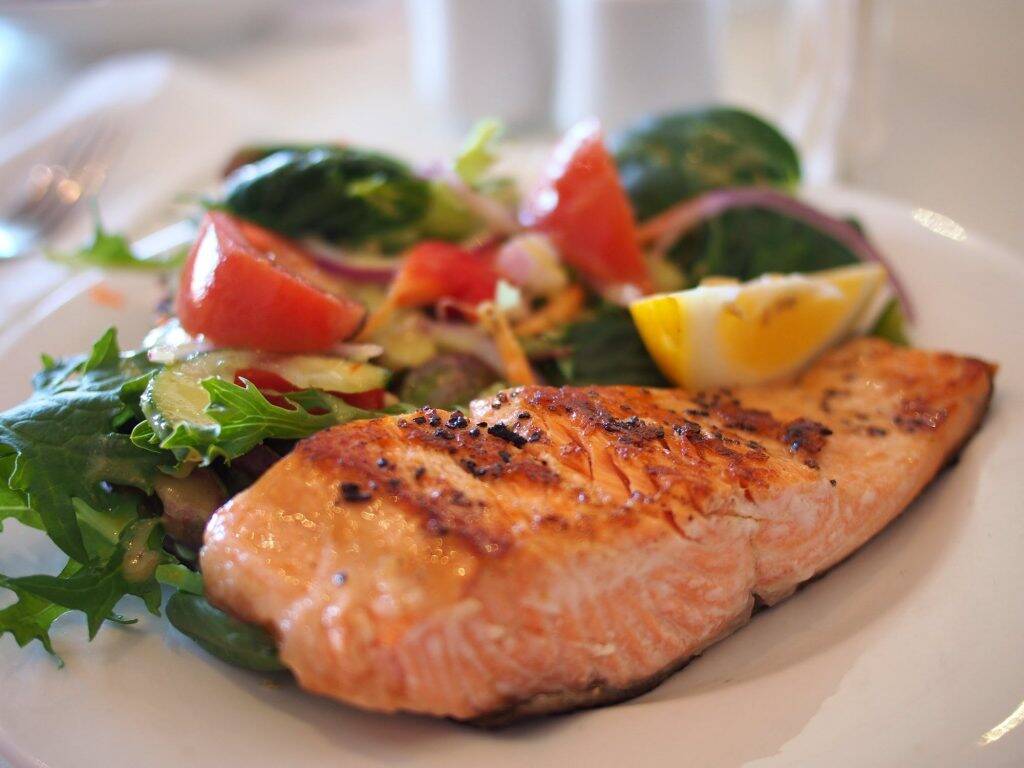
Now let’s take a look at the nutrients she focuses on and why to understand how they improve our health. We will divide the nutrients into two categories- foods to avoid and foods to include:
Foods to Avoid
Daily, Rhonda makes sure she doesn’t consume any added sugar or refined grains. This is because these types of food are not healthy for us and because there may be legal consequences. This past year, a judge ordered Coca-Cola to pay $3.3 million for misleading advertising campaigns that claimed their drinks were “scientifically proven” as part of an anti-obesity plan. Dr. Rhonda Patrick may have saved herself 3.3 million dollars by staying away from Coke in the first place!
Dr. Rhonda also limits her protein consumption to 0 .8 grams of protein per kilogram of body weight or 48 grams total per day. She understands that too much protein can be harmful, so she tries to stay within these limits, which is brilliant because excess amounts of anything (even healthy things) can be dangerous for our health!
Foods to Include
On the other hand, Dr. Rhonda eats a variety of nutrient-dense foods which are high in fiber and good fats like vegetables, low sugar fruits, legumes, nuts & seeds, high-quality sources of animal protein, wild-caught fish, little to no red meat, whole grains, and olive oil. Foods like these are low in fructose, contributing to type II diabetes, heart disease, obesity, liver disease, tooth decay, and more.
RELATED READING: Dr. David Sinclair’s Diet & Exercise Protocol for Longevity
Dr. Rhonda Patrick Diet: The Recommendations
When it comes down to specifics, Dr. Rhonda references the Mediterranean diet for its ability to improve both your physical and mental health. She eats a modified version of this diet with some restrictions on her blood sugar levels (more on that later). We will look at her foods in her “typical” daily meal plan, which you can read here. Although this isn’t exhaustive, it gives us a pretty good idea of what Dr. Rhonda eats daily and why, which is the goal of this article!
What does Dr. Rhonda Patrick eat in a Day?
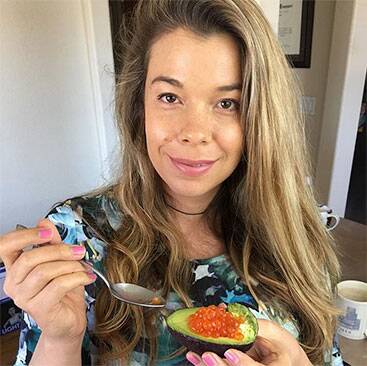
Here is a snapshot of what a regular day looks like for Dr. Rhonda:
Breakfast: steel cut oats cooked in unsweetened almond milk + almonds soaked overnight with salt added + 2 fried + 2 pieces of nitrate-free bacon
Snack: fruit + half an avocado or some full-fat yogurt
Lunch: big green salad with 4 cups of greens, sliced mushrooms, grated carrots, chopped tomatoes & cucumbers + 2 tablespoons olive oil &
vinegar dressing + 8 ounces of wild salmon cooked in ghee (clarified butter)
Dinner: A lot of vegetables roasted in coconut oil or grilled + grass-fed steak
On top of this, she drinks a protein shake every morning and before going to bed. She also has between 1 and 3 cups of coffee daily because it’s high in antioxidants (but not too much).
Breakfast- For breakfast, Dr. Rhonda typically starts her day with a cup of coffee with grass-fed unsalted butter and Brain Octane oil. Coffee not only has many health benefits, but it also provides essential antioxidants, increases mental clarity, and improves our fitness performance. However, adding butter to your coffee may not be for everyone, so feel free to use coconut oil instead if you prefer!
In addition, she will have an egg white omelet with spices like turmeric or ginger, sea vegetables like dulse flakes, wild-caught smoked salmon (not farmed), sauerkraut, and fermented veggies like kimchi.
Lunch- Lunch is typically a big plate of vegetables and eggs served with olive oil and balsamic vinegar dressing on the side. This provides an optimal ratio of omega 3:6 fatty acids, which our bodies need to stay healthy! Her favorite greens are spinach, kale, collard greens, swiss chard, mustard greens, dandelion greens, etc.
For proteins, she can eat pastured chicken or shellfish such as oysters and mussels. It’s worth noting that some people don’t eat shellfish because it has been known for its ability to bioaccumulate toxic pollutants, making it unsafe to consume. Dr. Rhonda chose to limit her intake anyway because she eats wild-caught salmon most days of the week which provides a similar nutritional profile as shellfish but with almost zero risk!
Dinner- For dinner, Dr. Rhonda chooses a lean protein source such as grass-fed beef, pastured chicken, pastured pork, or wild-caught fish. In addition, she will have plenty of vegetables, and if she isn’t having a type of legume that day, she will supplement with half a scoop of pea protein to ensure she gets enough good quality complete proteins in her diet.
This simple plan is nutrient-dense at every turn, and it follows some easy rules:
- Avoid refined grains (like white pasta or white rice).
- Avoid added sugars.
- Eat vegetables with every meal.
- Balance your healthy fats.
This is so important for optimal health because it promotes a more robust immune system, provides satiation, reduces inflammation, slows down aging, balances our hormones, boosts serotonin levels, which can improve mood & mental health, etc.
RELATED READING: Dr. Rhonda Patrick’s Fish Oil Protocol & Brand
The Essential Foods Breakdown
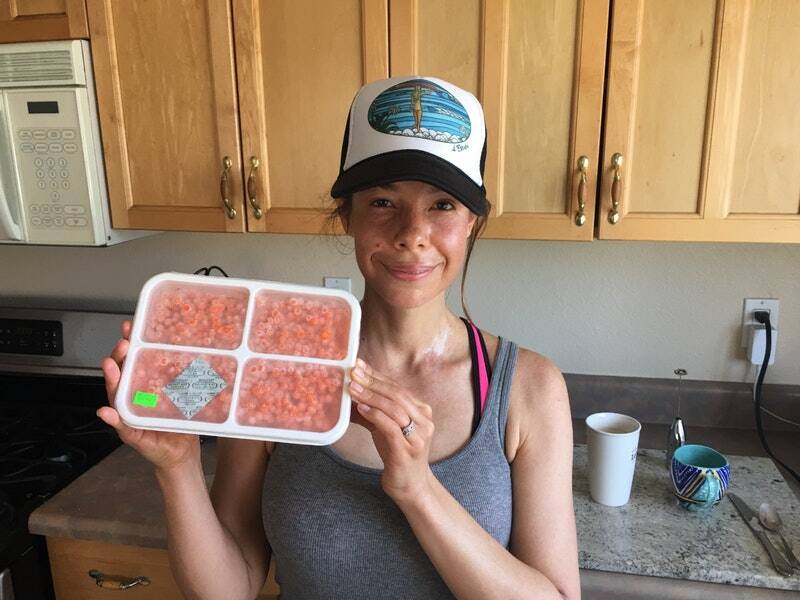
Proteins
A high-quality protein source such as wild fish or grass-fed beef has a high concentration of essential amino acids (EAAs), which can be broken down so the body can use them for vital processes. The proteins found in plants sources such as quinoa or beans/legumes have incomplete amino acid profiles and must be ingested together to ensure all EAA’s are present and “complemented” to form a whole protein. This is not necessary for proteins found in animal sources, as these are already complete proteins.
Fats
The quality of fats eaten on Dr. Rhonda Patrick’s diet is very important because it plays an essential role in the absorption of fat-soluble vitamins, which play a vital role in many processes our body needs to function. Vitamin A for skin health and vision, Vitamin D3 for immune system support and mood regulation (among other things), Vitamin E for muscle growth and repair, and Vitamin K2 to maintain strong bones and healthy teeth. All these can only be absorbed when taken with high-quality fats such as olive oil or coconut oil.
Also, certain fatty acids like Omega 3, Docosahexaenoic acid (DHA), and Eicosapentaenoic acid (EPA) are essential because our bodies cannot make them. These fatty acids also protect against heart disease, depression, cancer, Alzheimer’s, arthritis/joint pain, and even help keep your skin healthy and youthful-looking.
Healthy fat intake:
Healthy fats are essential because they contain fatty acids like omega 3s, critical for brain health. A large body of research demonstrates that low omega-three intakes are linked with almost every disease you can think of, including depression, cardiovascular disease, autoimmune diseases, ADD/ADHD, and many more. To protect our brains as we age into our 50s-60s (when the brain starts shrinking), it’s essential to eat foods high in fat like avocados, salmon, grass-fed meat.
Carbohydrates
The main problem with consuming carbohydrates on Dr. Rhonda Patrick’s diet is that it inhibits fat burning in the liver. When glucose stores from carbohydrates are high enough to last a day or more, they bind to proteins called “glycogen” inside cells which inhibit biochemical pathways related to metabolism. This doesn’t mean you can never eat carbohydrates again; it just means that they need to be consumed in moderation and with a high-quality protein source.
Low carbohydrate intake – The goal of eating low carbohydrates is to suppress the growth of harmful bacteria in the gut, called pathogenic overgrowth. These bacteria can “eat” carbohydrates, and when there are too many carbs around, they grow out of control. This dramatically increases inflammation in the body because your immune system can’t tell which signals are coming from you (your cells) or which ones are coming from these bacteria.
Limiting carbohydrate intake to shallow levels reduces their food supply so that they don’t have enough energy to stay active inside of you and therefore can’t turn up inflammation.
RELATED READING: Rhonda Patrick’s Sulforaphane Guide: Broccoli Sprouts, Dosage, & Supplements
What does this mean?
This means that Dr. Rhonda Patrick’s diet consists mainly of healthy fats such as fish, avocado, olive oil, nuts and seeds, coconut oil/butter/milk, etc., and quality proteins such as lean meats and eggs. The primary source of carbohydrates is from vegetables such as leafy greens like spinach or kale. In this way, vegetable consumption makes up most of Dr. Patrick’s diet, a common trend among those who subscribe to a holistic, healthy lifestyle.
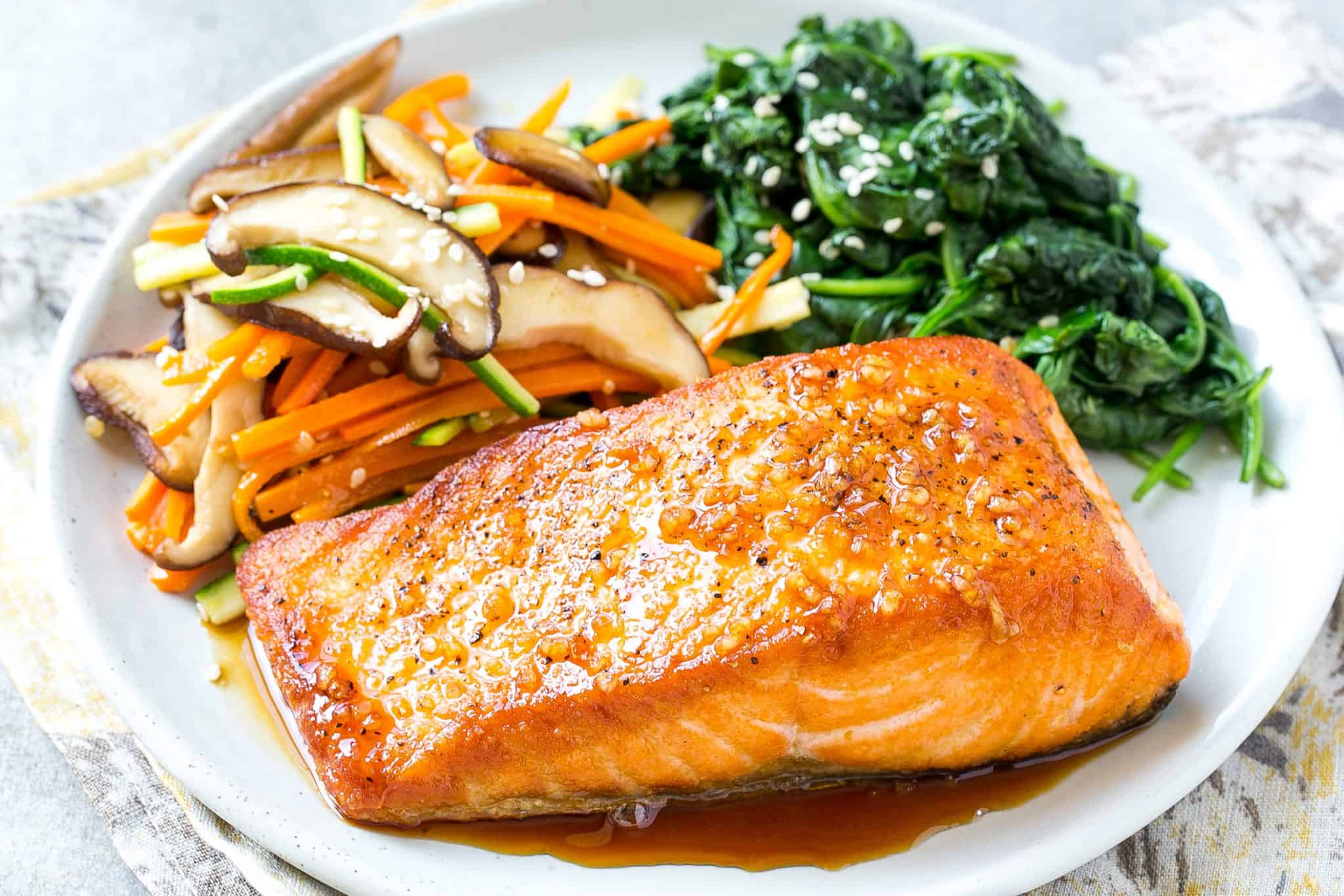
Why does Rhonda Patrick’s diet work?
There are many reasons why Dr. Rhonda Patrick’s diet works to help her stay healthy and maintain muscle mass, but there are two main factors that stand out: the quality of proteins and fats she consumes and the lack of carbohydrates.
For one, the protein sources she eats are of high quality. Fish and eggs are excellent sources of healthy fats and proteins that our bodies need to function correctly. In addition, Dr. Patrick’s diet is deficient in carbohydrates, which means it is lower calorie, helping her maintain a lean body mass while staying active.
Other benefits from eating this way include having a reduced risk for heart disease due to a higher antioxidant intake from leafy greens, berries, and other fruits – improved digestion due to antioxidant consumption and an increase in fiber consumption – reduced inflammation caused by grains, legumes, and sugars.
The primary concern with consuming more fat will be nutrient deficiencies such as vitamins A & D; however, Dr. Patrick makes a point to take a vitamin D supplement and consume foods high in vitamin A if she eats fatty fish.
RELATED READING: Dr. Peter Attia Supplements, Biohacking Toolkit, & Diet
Who does this Rhonda Patrick’s diet work for?
This type of diet works best for active and wants to maintain their lean body mass, which is achieved by eating adequate protein and avoiding sugars, grains, and processed carbohydrates that contribute to inflammation and obesity. In addition, it’s beneficial for those who have an autoimmune disease or chronic pain as the micronutrient-dense fats provide more powerful anti-inflammatory benefits than other food sources.
Dr. Rhonda Patrick has a particular diet, and it’s necessary to address specific components that may or may not fit into your lifestyle or preferences. For example, Dr. Patrick is a vegetarian primarily; however, she uses collagen protein that contains collagen from an animal source. If you are vegan, you will need to find another source of collagen protein that isn’t made with extracts from cows or pigs. Also, Dr. Patrick uses nutrient-dense smoothies on some days; however, this may not be feasible for everyone due to time constraints, so feel free to modify her diet in ways that work for you!
Now let’s discuss why Dr. Rhonda Patrick’s dietary choices are beneficial for athletes and those looking to maintain muscle mass, as well as strength and endurance.
RELATED READING: Tim Ferriss Supplement List: The Complete Guide
Muscle Mass
Having sufficient protein intake is essential for athletes (or anyone who wants to build muscle). Dr. Rhonda Patrick’s diet provides a good amount of protein which helps promote muscle growth and repair, especially after exercise. Additionally, having healthy fats with every meal helps the body take in fat-soluble vitamins so necessary processes can occur, including muscle health and growth. Finally, limiting carbohydrate intake limits a process called glucose-induced insulin resistance, which inhibits the uptake of amino acids by cells responsible for synthesizing proteins needed for building muscles — thus halting or slowing your gains!
Carbohydrates are necessary for endurance and energy levels during workouts because they are the primary fuel source your body uses during physical activity. When glucose is stored in muscles as glycogen, it can produce ATP (the energy currency of cells). Glycogen is depleted through exercise, which requires carbohydrate intake during exercise to maintain proper levels.
Strength/Power
Carbohydrates are also crucial for athletes looking to maintain strength and power because glucose provides much-needed “energy” when lifting heavy things or sprinting at top speed. Not having sufficient carbohydrates during these activities will not only make you weaker but may lead to increased fatigue and poor performance, resulting in injury. Consuming carbohydrates with a high-quality protein source post-workout ensures that the body has what it needs for muscle repair, which is critical for overall strength and endurance.
As previously mentioned, Dr. Rhonda Patrick’s diet provides a good amount of protein through foods like chicken, eggs, beef liver, nuts/seeds (walnuts), etc. Protein intake is essential simply because it helps rebuild damaged muscle fibers that occur post-workout (and sometimes during exercise, depending on how intense the activity was).
Having healthy fats with every meal furthers this process by providing the fuel necessary to synthesize proteins needed for muscle growth. Healthy fats also provide a source of antioxidant protection from free radicals, which can inhibit muscle repair and cause fatigue – so don’t negate their role! Carbohydrates also come into play because they help replenish glycogen, allowing for better muscle performance the next time you’re in the gym.
Having sufficient protein intake is essential for athletes (or anyone who wants to build muscle). Dr. Rhonda Patrick’s diet provides a good amount of protein which helps promote muscle growth and repair, especially after exercise.
RELATED READING: Dr. David Sinclair’s Supplement List for Longevity
Endurance/Energy
Carbohydrates are also crucial for athletes looking to maintain strength and power because glucose provides much-needed “energy” when lifting heavy things or sprinting at top speed. Not having sufficient carbohydrates during these activities will not only make you weaker but may lead to increased fatigue and poor performance, resulting in injury. Consuming carbohydrates with a high-quality protein source post-workout ensures that the body has what it needs for muscle repair, which is critical for overall strength and endurance.
Dr. Rhonda Patrick’s diet promotes healthy gut microbiota (beneficial bacteria in the gut), helping prevent Alzheimer’s and heart disease, and increasing exercise performance while reducing fatigue.
Finally, limiting carbohydrate intake limits a process called glucose-induced insulin resistance, which inhibits the uptake of amino acids by cells responsible for synthesizing proteins needed for building muscles — thus halting or slowing your gains!
Dr. Rhonda Patrick’s diet provides good protein through foods like chicken, eggs, beef liver, nuts/seeds (walnuts), etc. Protein intake is essential simply because it helps rebuild damaged muscle fibers that occur post-workout (and sometimes during exercise, depending on how intense the activity was). Having healthy fats with every meal furthers this process by providing the fuel necessary to synthesize proteins needed for muscle growth. Healthy fats also offer antioxidant protection from free radicals, which can inhibit muscle repair and cause fatigue — so don’t negate their role! Carbohydrates also come into play because they help replenish glycogen, allowing for better muscle performance the next time you’re in the gym.
Rhonda Patrick’s diet also helps provide many other health benefits, such as promoting healthy gut microbiota (healthy bacteria in the gut), helping prevent Alzheimer’s and heart disease, and increasing exercise performance while reducing fatigue.
The following are the basics in terms of what Dr. Rhonda Patrick’s eats:
- Preworkout: 30g fast-absorbing protein powder (100 calories) + unsweetened cocoa powder (15-25 calories). She drinks this about an hour before exercising.
- Post-workout: Salad greens, mixed veggies, oil, and vinegar dressing for a little extra fat that will help absorb fat-soluble vitamins from salads eaten earlier in the day.
In terms of quantities when it comes to each nutrient above, they depend on which foods she is eating at each meal as well as total calorie intake — but her primary source of nutrients include an extraordinary amount of fruit and vegetables daily with moderate amounts of meat/fish/poultry for protein (including 1 to 2 portions of dairy).
Dr. Rhonda Patrick’s diet is high in micronutrients but low in calories, so it’s crucial to eat frequently throughout the day; she eats every two hours! Processed foods should also be kept out of her diet as much as possible, which includes sweets like cookies and cakes! Overall, Dr. Rhonda Patrick’s diet provides nutrient-rich lean protein, healthy fats, and a good amount of fruits and vegetables.
RELATED READING: The Slow Carb Diet by Tim Ferriss: The Complete Guide
Rhonda Patrick’s Daily Supplements
Rhonda Patrick is just as intentional and research-driven when it comes to supplements as she is with her diet. She doesn’t take anything without a good reason; every supplement included in her routine has solid evidence to back up the benefits. Her routine is focused on filling nutritional gaps, supporting cellular health, and optimizing brain and body function.
If you’re wondering what she is taking each day, I have outlined that below. From foundation-type staples to more targeted supplements, Vitamin D, and magnesium, sulforaphane to PQQ-all figure into her general health strategy, respectively. In the list below, I include the brands she used, which hopefully will make life a little bit easier when looking for them.
- Multivitamin: A daily capsule of Pure Encapsulations O.N.E. Multivitamin provides essential vitamins and minerals.
- Vitamin D: Thorne Research D3, approximately 5,000 IU, to maintain healthy vitamin D levels.
- Magnesium: Pure Encapsulations Magnesium Glycinate, 120 mg, for muscle and nerve function.
- Omega-3 Fish Oil: Carlson Maximum Omega, delivering over 2 grams of Omega-3 fatty acids for heart and brain health.
- Vitamin K2: Life Extension Mega Vitamin K2, 100 mcg, to support bone and cardiovascular health.
- Alpha Lipoic Acid: Pure Encapsulations ALA taken in a dose of 600 mg daily to enhance mitochondrial function and antioxidant defense.
- Cocoa Extract: CocoaVia, consumed as either three capsules or one scoop, for cognitive support.
- Sulforaphane: Avmacol Extra Strength, two tablets daily, to boost the body’s immune and detox pathways.
- Pyrroloquinoline Quinone (PQQ): Life Extension PQQ, 20 mg daily, potentially for cognitive and mitochondrial health.
- Berberine: Thorne Berberine, 1,000 mg, to promote metabolic health and regulate blood sugar.
- Lutein & Zeaxanthin: Pure Encapsulations Lutein & Zeaxanthin, containing 10 mg lutein and 2 mg zeaxanthin, for eye health.
- Ubiquinol: Pure Encapsulations Ubiquinol-QH, 100 mg daily, to support energy production at the cellular level.
- Melatonin: Pure Encapsulations Melatonin, 10 mg before bedtime, for better sleep quality.
Conclusion
In diving into Dr. Rhonda Patrick’s diet, we’ve explored how a low-carb approach can do wonders for your gut health and boost your endurance in those long, grueling workouts. We’ve also touched on why protein isn’t just good for bulking up but is crucial for everything from muscle repair to keeping your brain’s chemistry in check. And let’s not forget about fats – they’re not just for flavor; they’re key players in keeping your brain sharp and reducing inflammation throughout your body.
But the benefits don’t stop there. Imagine potentially lowering your risk for Alzheimer’s or dementia – pretty cool, right? There’s even research showing that a ketogenic diet can slash insulin resistance by up to 60% in just a month. So, if you’re looking to optimize your health through diet, this approach might just be worth considering.

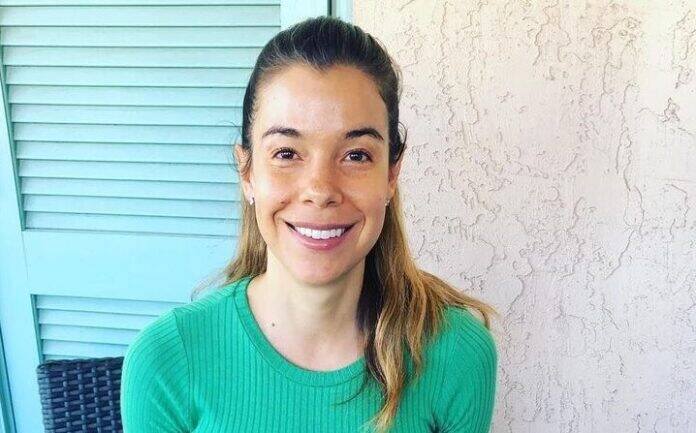
Your style is very unique compared to other folks I’ve read stuff from. I appreciate you for posting when you have the opportunity, Guess I’ll just bookmark this site.
Thanks for finally writing abvout > Dr. Rhonda Patrick's Diet
Plan (2022) - Brainflow < Loved it!
Way cool! Some extremely valid points! I appreciate you writing this
post and also the rest of the site is really good.
Having read this I believed it was extremely
enlightening. I appreciate you spending some time and effort to put this
article together. I once again find myself personally spending way too much
time both reading and leaving comments. But so what, it was still worth it!
Awesome article.
I always spent my half an hour to read this blog’s content every day along with a cup of coffee.